
Queueing delay
-
Nutrition and health counselling (NHC) was usually conducted in hospital settings with groups of mothers. Barriers to counselling were long queues and delays, long distances and high travel costs, the inapplicability of the counselling content, lack of spousal support, and a high domestic workload.
 14p
14p  vishanshan
vishanshan
 27-06-2024
27-06-2024
 1
1
 1
1
 Download
Download
-
In this paper, we propose a distributed traffic-balancing routing protocol for large-scale wireless sensor networks to distribute traffic from sources to sinks effectively by utilizing the number of hops and the current queue size at one- and two-hop next neighbors to make routing decisions.
 7p
7p  vidoctorstrange
vidoctorstrange
 06-05-2023
06-05-2023
 2
2
 2
2
 Download
Download
-
Lecture Operations now: Supply chain profitability and performance (3/e): Chapter 8 - Byron J. Finch
Chapter 8 - Timeliness: Scheduling and project management. After reading the material in this chapter, you should be able to: Explain the effect time has on each profitability measure, describe the impact of feedback delay on quality, explain the common time reduction strategies, construct a Gantt chart, Sequence orders using the traditional sequencing rules, describe the physical features of queues and describe how they affect queue performance,...
 66p
66p  lovebychance05
lovebychance05
 30-05-2021
30-05-2021
 21
21
 1
1
 Download
Download
-
In order to more contribution to the next-generation network, these routing protocols should be more flexible, saving energy, and performance achievable. In this paper, we propose a multi-metric on-demand routing protocol based on three parameters: queue length, route quality, and hops number to improve the MANET performance. Base on the working conditions of the network system. One or more routing metrics will be integrated into the cost function. Besides, we also performance evaluation of the MM-AODV compared with traditional routing protocols such as AODV and DSR.
 6p
6p  chauchaungayxua11
chauchaungayxua11
 23-03-2021
23-03-2021
 16
16
 2
2
 Download
Download
-
In a cognitive radio network (CRN), a preempted secondary user (SU) is placed in a call level queue to wait for accessing another free channel. If the availability of channels is transparent to SUs, packets will be generated during their waiting time and the performance of the CRN will be influenced by which way to handle these packets. In this paper, the call level queue is departed into two parts, delay queue and discard queue.
 9p
9p  vivalletta2711
vivalletta2711
 11-01-2020
11-01-2020
 15
15
 1
1
 Download
Download
-
It is important in data communication settings to be able to characterise the delay that individual packets are subjected to in their sojourn through the system. Delays can be traced to four main causes: Processing delay, propagation delay, transmission delay, queueing delay.
 75p
75p  kexauxi4
kexauxi4
 01-10-2019
01-10-2019
 18
18
 1
1
 Download
Download
-
The following will be discussed in this chapter: Delay in packet networks, introduction to queueing theory, review of probability theory, the poisson process, little’s theorem, proof and intuitive explanation.
 37p
37p  kexauxi4
kexauxi4
 01-10-2019
01-10-2019
 26
26
 2
2
 Download
Download
-
This paper considers a discrete-time bulk-service queue with infinite buffer space and delay multiple working vacations. Considering a late arrival system with delayed access (LAS-AD), it is assumed that the inter-arrival times, service times, vacation times are all geometrically distributed.
 17p
17p  vinguyentuongdanh
vinguyentuongdanh
 19-12-2018
19-12-2018
 17
17
 2
2
 Download
Download
-
But an RTGS structure may incentivise free-riding. A bank may find it convenient to delay its outgoing payments (placing it in an internal queue) and wait for incoming funds, in order to avoid the burden of acquiring expensive liquidity in the first place. As banks fail to ‘internalise’ the systemic benefits of acquiring liquidity, RTGS systems may suffer from inefficient liquidity underprovision. Inefficiencies may also emerge for a second reason.
 20p
20p  machuavo
machuavo
 19-01-2013
19-01-2013
 44
44
 3
3
 Download
Download
-
Such central queues are called ‘liquidity-saving mechanisms’ (LSMs). There are a number of studies on plain RTGS systems, but only a few on RTGS systems augmented with LSMs. Our work contributes to this line of research. We first model a benchmark system, ie a plain RTGS system where each bank decides: (i) the amount of liquidity to use; (ii) which payments to delay in an internal queue (payments are made as banks randomly receive payment orders, which need be executed with different ‘urgency’).
 28p
28p  machuavo
machuavo
 19-01-2013
19-01-2013
 57
57
 3
3
 Download
Download
-
THE QUEUEING BEHAVIOUR OF PACKETS IN AN IP ROUTER BUFFER In Chapters 7 and 8, we investigated the basic queueing behaviour found in ATM output buffers. This queueing arises because multiple streams of cells are being multiplexed together; hence the need for (relatively short) buffers. We developed balance equations for the state of the system at the end of any time slot, from which we derived cell loss and delay results.
 24p
24p  huggoo
huggoo
 20-08-2010
20-08-2010
 93
93
 8
8
 Download
Download
-
COMBINING THE BURST AND CELL SCALES The finite-capacity buffer is a fundamental element of ATM where cells multiplexed from a number of different input streams are temporarily stored awaiting onward transmission. The flow of cells from the different inputs, the number of inputs, and the rate at which cells are served determine the occupancy of the buffer and hence the cell delay and cell loss experienced. So, how large should this finite buffer be? In Chapters 8 and 9 we have seen that there are two elements of queueing behaviour: the cell-scale and burst-scale components. ...
 18p
18p  huggoo
huggoo
 20-08-2010
20-08-2010
 76
76
 7
7
 Download
Download
CHỦ ĐỀ BẠN MUỐN TÌM








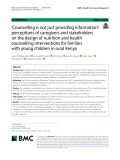
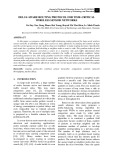
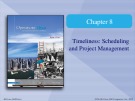


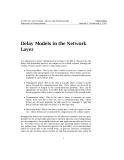
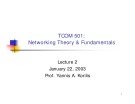
![GEOM/GEOM[A]/1/ queue with late arrival system with delayed access and delayed multiple working vacations GEOM/GEOM[A]/1/ queue with late arrival system with delayed access and delayed multiple working vacations](https://tailieu.vn/image/document/thumbnail/2018/20181219/vinguyentuongdanh/135x160/6631545235210.jpg)








